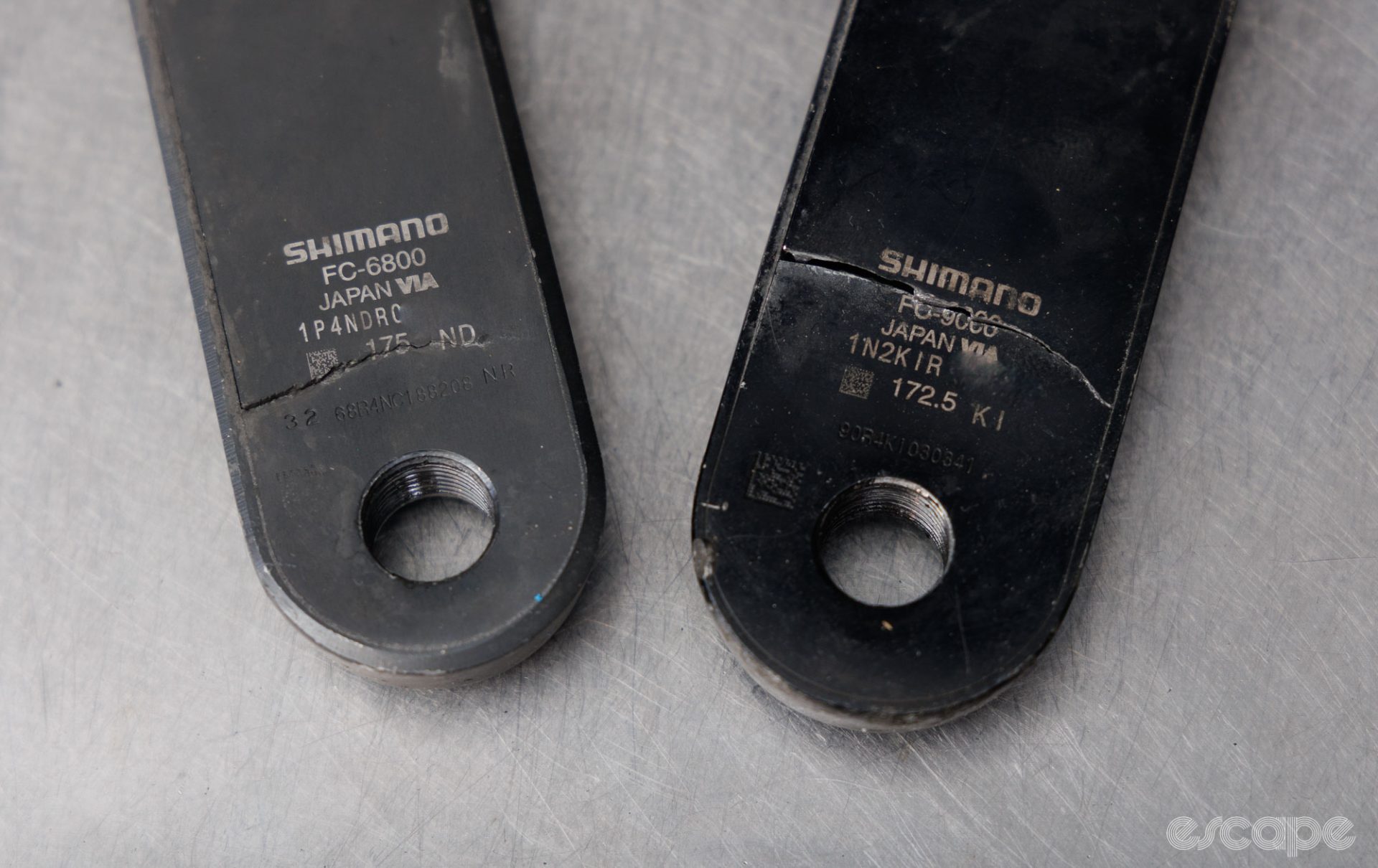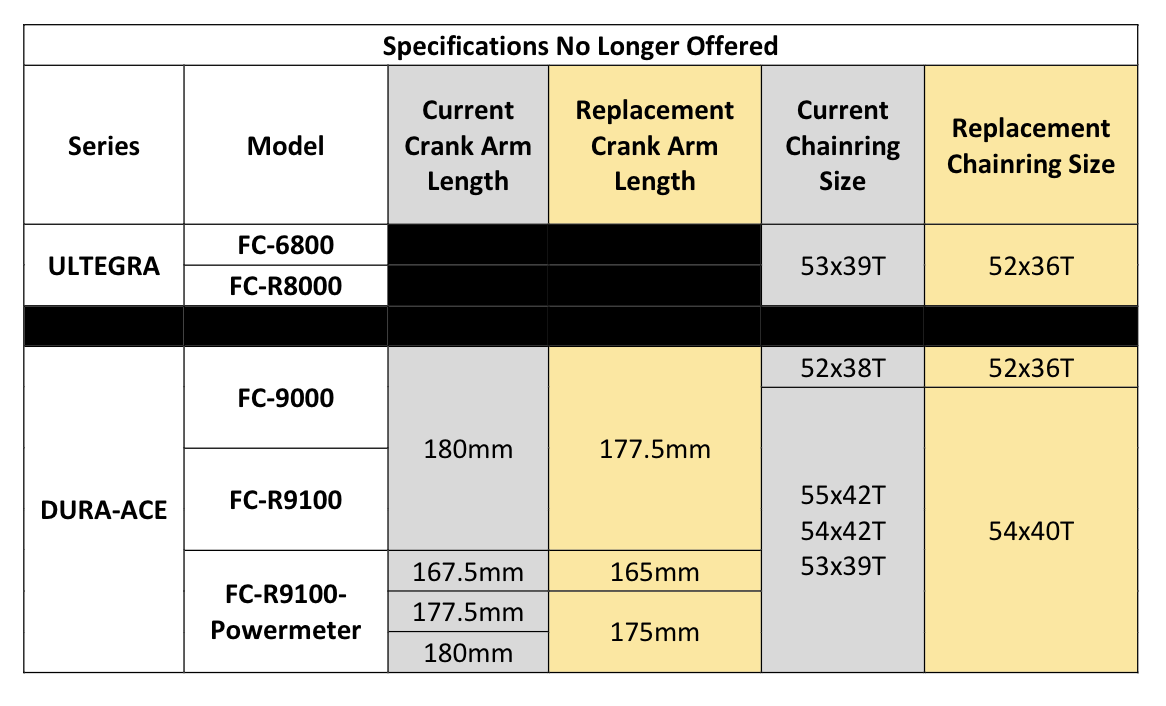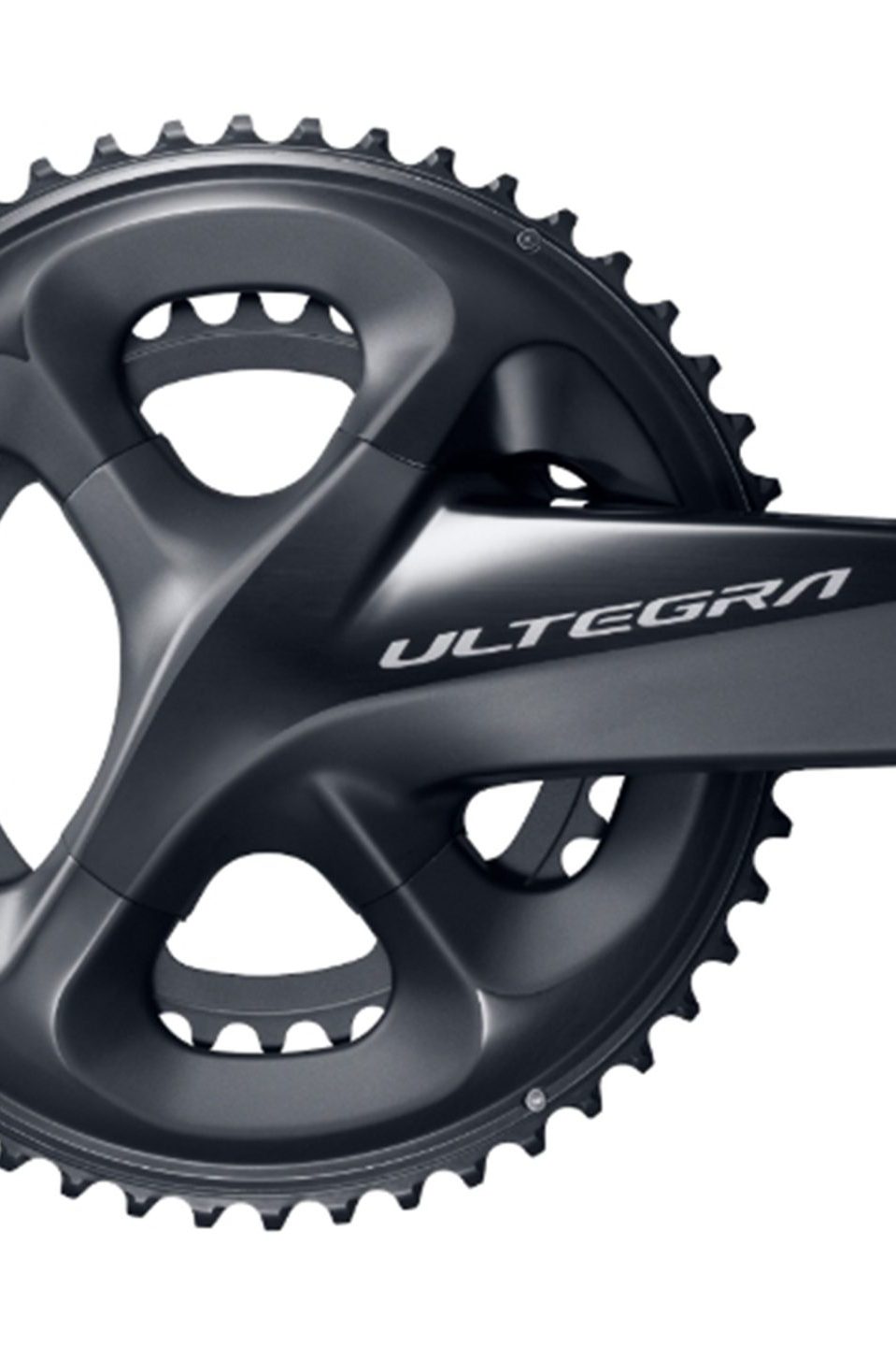Many riders by now will have been aware that Shimano’s had a bit of a reliability issue with some of its cranksets: specifically, the bonded outer shell on certain HollowTech II crankarms can separate from the forged base partially or completely, resulting in failure. Shimano has been mostly silent on the issue to date, but we’ve long had the sense more was going on in the background – and after a long wait, Shimano has finally announced an official recall.
The recall is fairly limited in scope, at least as far as models go, affecting only 11-speed Shimano Ultegra and Dura-Ace cranksets – specifically, the FC-6800, FC-R8000, FC-9000, FC-R9100, and FC-R9100-P models. But according to the recall notice, approximately 680,000 of these cranks were sold in the US, with another 80,000 sold in Canada. Shimano says only cranksets produced between June 1, 2012 through June 30, 2019 are included in the recall, all of which will feature one of the following date codes stamped on the backside of the crankarm:
KF, KG, KH, KI, KJ, KK, KL, LA, LB, LC, LD, LE, LF, LG, LH, LI, LJ, LK, LL, MA, MB, MC, MD, ME, MF, MG, MH, MI, MJ, MK, ML, NA, NB, NC, ND, NE, NF, NG, NH, NI, NJ, NK, NL, OA, OB, OC, OD, OE, OF, OG, OH, OI, OJ, OK, OL, PA, PB, PC, PD, PE, PF, PG, PH, PI, PJ, PK, PL, QA, QB, QC, QD, QE, QF, QG, QH, QI, QJ, QK, QL, RA, RB, RC, RD, RE, and RF

For now, this recall also only applies to the United States and Canada, “in cooperation with the U.S. CPSC and Health Canada. The corrective action is global, but implementation varies by region based on specific requirements and dates. Shimano is implementing an Inspection and Replacement Program worldwide. Details of this program may vary by region but information has been shared in each region.”
In other words, other regions are expected to follow with official announcements through the respective local governing bodies.
CPSC says it’s received, “4,519 incidents of cranksets separating, and six reported injuries, including bone fractures, joint displacement and lacerations.” At this time, those figures presumably apply only to the US and Canada. Nevertheless, Shimano says it expects “only a very small percentage of these cranksets will need to be replaced.” Based solely on the number of cranks sold and the number of official incident reports, that amounts to a failure rate of just under 0.6%. However, given the large volume of cranks on the market, it still amounts to a significant figure in terms of absolute numbers – and again, this is just in North America.
Customers with a crankset covered by this recall are asked to contact a local authorized Shimano dealer to schedule an inspection, and dealers have apparently been supplied with a detailed crankset inspection process. Cranks that have been deemed to show signs of separation will be replaced with a new one that will installed by the dealer at no charge (parts or labor). If, on the other hand, that dealer deems your crankset to show no signs of bonding separation, Shimano says you can continue riding that crankset. Either way, Shimano says that inspections will be performed starting October 1, 2023.

If a failure occurs later, however, it sounds like Shimano will continue to offer coverage for the next several years, although an exact date has yet to be set. And if you were denied a warranty claim in the past for an affected crank that already failed in this manner (which Shimano says shouldn’t have happened), and have already paid out-of-pocket for a replacement, hopefully you still have that broken crankset on hand as you should now be able to get a new one.
Now, about that new crankset: Shimano says it’s already discontinued production of those 11-speed cranks, and restarting those production lines just isn’t feasible. As a result, Shimano will replace those Ultegra and Dura-Ace cranks with a, “special version, which may feature a different cosmetic appearance while maintaining the same level of performance.” Those cranks are supposedly based on current 12-speed cranks, but with chainring spacing that has been adjusted for use with 11-speed drivetrains.
“Any cranksets that have been inspected and need replacement will be replaced with the corresponding model of crank,” Shimano stated. “For example, Dura-Ace cranks will be replaced with 12-speed Dura-Ace cranks that have been adjusted for 11-speed chainrings and to better match the corresponding 11-speed aesthetic.”
Chainring spacing is one issue; other specs such as crankarm length and chainring sizes are another.
Wherever possible, Shimano says it will replace affected cranks like-for-like, but the reality is there are fewer configurations manufactured now than there were before. In those cases, Shimano will replace those cranks as follows:

Some affected cranks will also have had third-party power meters installed, but Shimano says it has a plan for that.
“Any items that are found to fail during inspection and that are sent back to Shimano will be replaced free of charge without the third-party power meter attached. Shimano will be providing a rebate in the form of a check to the consumer where the consumer can use that towards the replacement of the third-party power meter.”
Those rebates will range from US$300-325 / CA$400-430 for single-sided power meters, and US$500 / CA$650 for dual-sided ones: perhaps not enough to have new third-party power meters installed on the replacement cranks, but better than nothing.
Still, we’ve got some lingering questions.
What if you’ve got a broken crank and Shimano doesn’t have a suitable replacement on hand? Given how many Ultegra and Dura-Ace cranks were likely produced during the stated time period, why are some cranks failing while others aren’t? What if you have one of those rather rare Dura-Ace factory power meter cranks? Will those be replaced with the even-rarer current model?
Also, what if you have a crankset that’s affected by the recall but looks fine, but you’re now just uncomfortable riding it anymore knowing it’s prone to failure? And what if you were denied a warranty claim previously for a crank that would now be covered, already paid out-of-pocket for a replacement, and no longer have the broken crank to submit for a fresh claim? According to these guidelines, you’re unfortunately out of luck.
Those are all questions for which we don’t yet have answers, but we’ve posed all of those to Shimano and will update this article as needed.
In the meantime, more information can be found at bike.shimano.com.
What did you think of this story?


